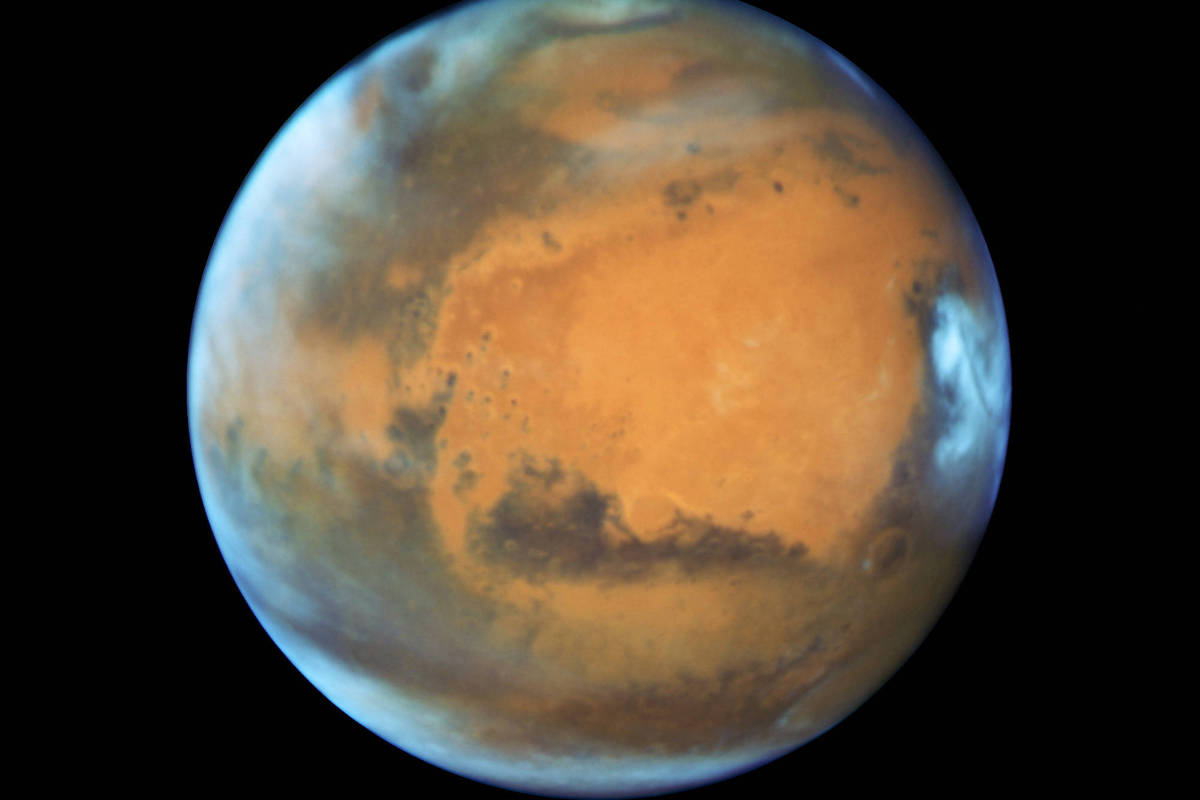Researchers say they have found evidence of liquid water on Mars in pores in igneous rocks in the planet’s crust. According to data captured by NASA’s InSight lander, the reservoir deep inside Mars could be enough to cover the planet to a depth of one to two kilometers.
Study author Michael Manga, a researcher at the University of California, Berkeley, estimates that the site could, in principle, support life. “Water is essential for life as we know it. That doesn’t mean there is life on Mars, but at least it has environments that could be habitable,” he said. Binder.
On Earth, for example, there are extremophile bacteria that can survive in conditions of high temperature and pressure. Chemosynthetic bacteria live kilometers below the surface and use the electrochemical energy of rocks to generate nutrients.
According to Studying Published in the magazine People This Monday (12), the planet’s water is located between 11.5 kilometers and approximately 20 kilometers below the surface. This makes it impossible to use it for exploration in future missions or colonization of Mars. Even on Earth, drilling to a depth of one kilometer is already a major challenge.
past surrounding
In the 1970s, the Mariner 9 probe imaged Mars in greater detail. The instruments mapped more than 85 percent of the Martian surface and sent back some 7,000 images of the planet. The mission brought back the first clear evidence of structures scattered across the planet’s surface that were drainage channels. “The most straightforward explanation is that there was a large amount of water,” explains Gustavo Porto de Mello, a professor at the Valongo Observatory.
The southern part of the planet has higher, cratered areas, while in the north the terrain is smoother and lower. This suggests that there was once an ocean in the north that disappeared 3 billion years ago. It was already known that part of it had been lost to space, and part of it was frozen at the poles in the form of permafrost (frozen soil that also exists on Earth).
The study provides new evidence that another part accumulated in the pores of igneous rocks, the product of cooling magma. The water is found in tiny holes between mineral particles.
“If you calculate what might be stored in the polar ice caps and in the form of permafrost, it would be enough to cover the planet with a layer of a few tens of meters of water. That’s a huge amount,” says the professor at the Valongo Observatory.
A combination of factors may have led to the loss of water across the planet. The loss of the magnetic field contributed to the dissipation of the Martian atmosphere. The decrease in atmospheric pressure made liquid water on the surface unstable, and the planet lost its hydrological cycle.
At high altitudes, water vapor is exposed to ultraviolet radiation, causing it to decompose. In the process, hydrogen is lost because it is too light, while the planet does not have a strong enough gravity to hold these atoms.
For Milo, most of the planet’s water likely went into reservoirs in the Earth’s crust. The results of the recent scientific paper are similar to those of One of 2021 It was done by researchers at the California Institute of Technology (Caltech). According to the research, between 30% and 99% of the water on Mars was trapped in rocks in the planet’s crust.
One of the main hypotheses that explains the presence of water inside Mars is the movement of tectonic plates. When they moved away, the water may have entered the Earth’s crust, says researcher and postdoctoral fellow at the Institute of Chemistry of the University of São Paulo (IQ-USP) Bruno Nascimento-Dias.
From Dias’s point of view, confirmation of the presence of liquid water on Mars increases the motivation to search for this resource in more accessible locations closer to the surface.
Insight Lander Data
The InSight Lander landed on Mars in 2018 and ended its mission in 2022. The goal was to gather information that would help explain the processes behind the formation of the Red Planet. During that time, the probe produced a “treasure trove of data” that could be used for decades to come, according to Gustavo Porto de Mello.
InSight Lander was able to detect movements inside the planet on the surface, explains Ellen Novis, a postdoctoral fellow at Lund University in Sweden. The researchers compared the lander’s data with different models of Earth’s rocks and different amounts of pore water.
“Based on what they observe about this seismic activity, they can infer which of these models is closest to what’s happening on Mars,” says the postdoctoral student. “This is statistical work, it measures the probability that a model is representative of reality.”

“Hardcore beer fanatic. Falls down a lot. Professional coffee fan. Music ninja.”







More Stories
Criciúma Church promotes symposium on faith and science ➜ Read on the Içara news portal:
Ufopa announces Master’s Degree in Forest Science, Technology and Innovation
The James Webb Telescope reveals details of Pluto’s moon – 10/02/2024 – Science